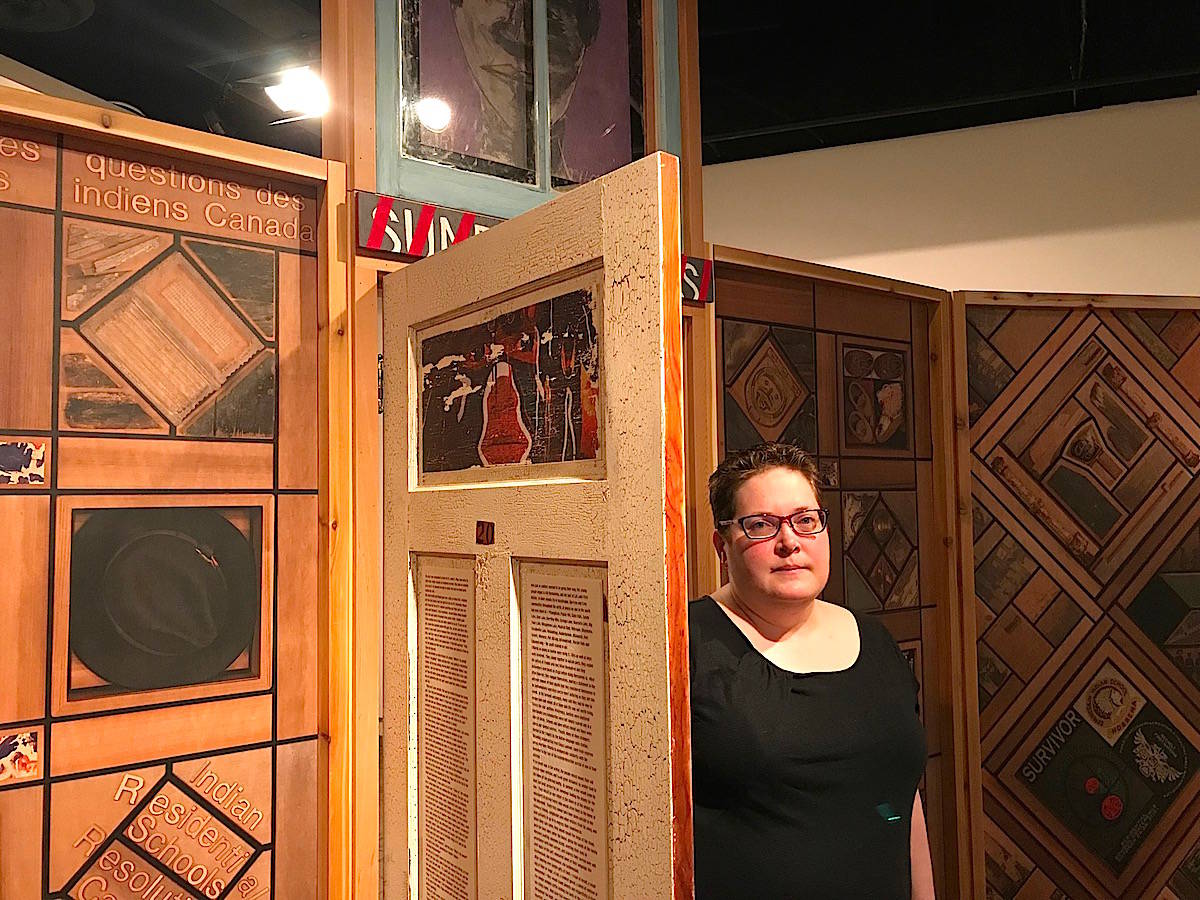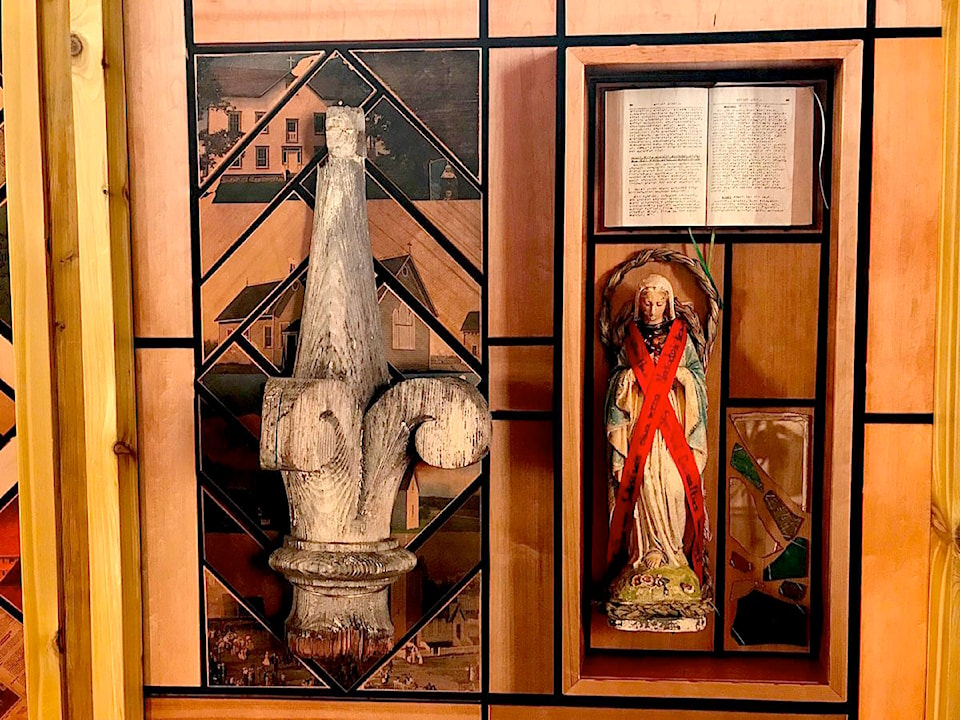Ellen Hart was 16 years old when government agents took her from her family on the Nelson House First Nation in Northern Manitoba and brought her to central Alberta for educational assimilation.
Along with her younger sister Matilda and six other children from the remote community, Ellen had to cross 1,600 km of forest and Prairie to arrive at the Red Deer Indian Industrial Institute.
She didn’t survive here for long.
Historic records tell us that four out of the eight kids from Nelson House died within several years from causes such as “decline” and “consumption”— including Ellen, whose 1903 death was attributed to “heart disease.”
Her wooden headstone is preserved and displayed at the Red Deer museum.
Other objects from the Red Deer residential school — including a desk and a metal headboard still scrawled with some children’s names — help make this horrific history more tangible.
Besides these displayed local artifacts, the Witness Blanket art installation at the museum “bears witness” to thousands of such tragedies.
What’s showing until June 23 is actually a photographic facsimile of the original Witness Blanket installation created by B.C. artist Carey Newman, who had gathered hundreds of items from 77 communities across the country.
These objects were given to Newman by residential school survivors, their families, and even by the churches that operated the schools and the federal government. The artist then “wove” these letters, photos, documents, emblems, pieces of blanket, wallpaper and architectural detail from the schools into a powerful 12-metre long artwork that resembles a cedar-framed quilt.
Since the original Witness Blanket is undergoing conservation at the Canadian Museum of Human Rights after three years of touring, this reproduction was made to keep telling the important stories behind the artifacts, said the museum’s exhibits co-ordinator Kim Verrier.
Viewers will see chilling aspects to Newman’s work — including a child’s burnt shoe, found on the grounds of a burned down school in the Yukon, and the figure of a priest drawn on the inside of a door. Newman, whose father is a residential school survivor, has said this represents the sexual abuse of students.
In the first decade of the last century, a study found that Red Deer’s Indian Industrial Institute, which was largely made up of First Nations students from the Maskwacis area, had deplorable food and sanitation — and one of the highest mortality rates of all such schools in Canada.
The facility, once located across the river from Fort Normandeau, was closed in 1919 and since demolished.
Since many Indian residential schools are no longer standing, Verrier hopes central Albertans come away from the Witness Blanket display with a more palpable sense of what was experienced by the children and families of First Nations people.
As Indigenous elder Stan Mackay states: “In order to grow in tolerance and understanding we must listen to the stories of others.”
Museum executive-director Lorna Johnson believes the Witness Blanket “opens the door of awareness… to teach all Canadians about this national atrocity.”
There is an opening reception Friday evening, May 3.
lmichelin@reddeeradvocate.com
Like us on Facebook and follow us on Twitter

